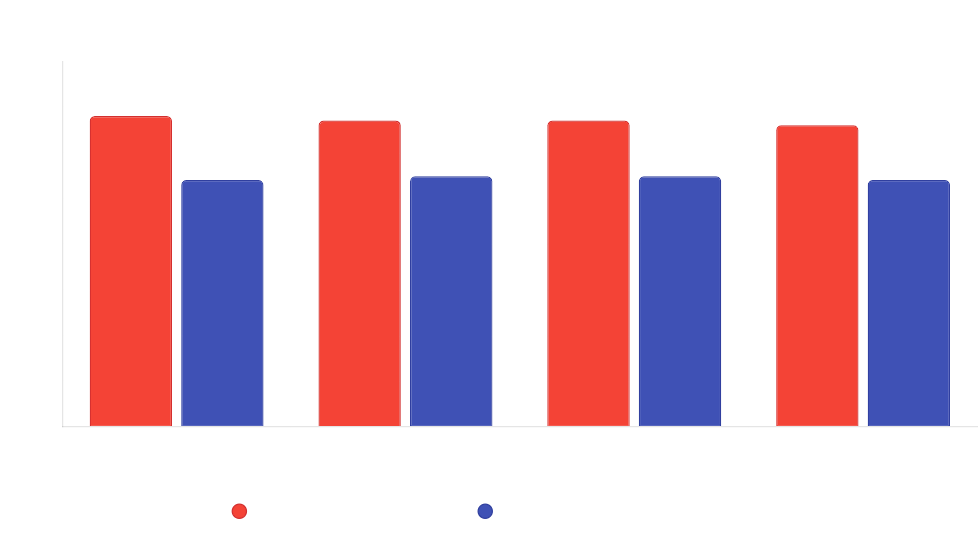Discover why Gen Z is increasingly gravitating toward social sciences and humanities over pure sciences. Explore enrollment trends, cultural drivers, and career motivations behind this shift, and what it means for the future of education and work.

By Newswriters Editorial Desk
In recent years, a notable trend has emerged in higher education: the younger generation, particularly Gen Z, appears to be shifting away from traditional pure sciences (physics, chemistry, mathematics) toward social sciences (psychology, sociology, anthropology) and humanities (history, literature, philosophy). This shift, observed across universities globally, raises questions about changing priorities, cultural influences, and career aspirations. This report analyzes the evidence, drivers, and implications of this trend, offering insights for educators, policymakers, and students.
Enrollment Trends: A Shift in Academic Preferences
Data from various educational systems highlights a growing interest in social sciences and humanities among younger students:
- United States: According to the National Center for Education Statistics (2023), enrollment in social sciences like psychology and communication studies has risen by 8% over the past decade, while pure sciences like physics and chemistry have seen stagnant or declining enrollment in some institutions. Psychology, for instance, is now among the top five majors, with over 120,000 bachelor’s degrees awarded annually.
- United Kingdom: UCAS data (2024) shows a 10% increase in applications for humanities disciplines (e.g., history, political science) over the past ten years, compared to a modest 5% growth in pure sciences. Anthropology and sociology have particularly surged, reflecting interest in societal issues.
- India: While STEM fields dominate due to competitive entrance exams for engineering and medicine, liberal arts programs at institutions like Ashoka University and FLAME University report 15% annual enrollment growth in social sciences and humanities (2023 Indian higher education reports).
- Europe: Universities in countries like Germany and the Netherlands note rising demand for interdisciplinary programs blending humanities with data science or AI ethics, with a 12% increase in social science-related enrollments since 2020 (European University Association, 2024).
These trends suggest a pivot toward fields perceived as more socially relevant and flexible, though the extent of the shift varies by region.
Drivers of the Shift
Several factors explain why younger generations are gravitating toward social sciences and humanities:
1. Cultural and Societal Relevance
Gen Z, born between 1997 and 2012, prioritizes issues like mental health, social justice, and environmental sustainability. Social sciences and humanities align closely with these concerns:
- Psychology Surge: Increased awareness of mental health has driven enrollment in psychology programs, with U.S. data showing a 20% rise in psychology majors since 2015. Students aim to address real-world issues like anxiety and societal polarization.
- Social Justice and Equity: Fields like sociology and anthropology appeal to students interested in tackling inequality, systemic racism, and cultural identity, resonating with Gen Z’s activism.
- Environmental and Ethical Focus: Interdisciplinary programs combining humanities with environmental studies or AI ethics attract students who want to blend scientific methods with societal impact.
2. Perceived Career Flexibility
Unlike pure sciences, which often lead to specialized roles (e.g., lab researcher, engineer), social sciences and humanities offer versatile skills:
- Transferable Skills: Critical thinking, communication, and analytical skills from humanities degrees are valued in diverse fields like policy analysis, media, marketing, and tech (e.g., UX design, ethical AI consulting).
- Job Market Shifts: With automation threatening traditional STEM jobs (e.g., coding roles), students see social sciences as a hedge against uncertainty. For example, LinkedIn’s 2024 job trends report highlights growing demand for roles in organizational psychology and cultural consulting.
- Entrepreneurial Appeal: Humanities graduates often pursue creative or entrepreneurial paths, such as content creation or social impact startups, which align with Gen Z’s desire for autonomy.
3. STEM Fatigue and Accessibility
Pure sciences are often perceived as rigorous and competitive, deterring some students (STEM: Science, Technology, Engineering, and Mathematics).
- High Barriers: Fields like physics or mathematics require strong foundational skills and intense commitment, which can feel exclusionary, especially for underrepresented groups.
- Creative Appeal: Humanities and social sciences offer interpretive and creative outlets, appealing to students who find pure sciences overly rigid or abstract.
- Gender Dynamics: Women, who make up 65% of psychology and education majors but only 30% of physics majors (U.S., 2023), may face systemic barriers in STEM, pushing them toward social sciences.
4. Interdisciplinary Opportunities
Modern academic programs increasingly blend disciplines, making social sciences and humanities more appealing:
- Digital Humanities: Programs combining literature or history with data analysis attract tech-savvy students who want human-centric applications of technology.
- Policy and Tech: Fields like science, technology, and society (STS) bridge STEM and humanities, addressing ethical questions around AI and biotech.
- Global Challenges: Courses tackling climate change or global migration often integrate sociology, anthropology, and environmental science, drawing students who want holistic solutions.
Counterpoints: The Resilience of Pure Sciences
Despite the shift, pure sciences remain dominant in certain contexts:
- STEM Demand in Asia: In countries like China and India, cultural and economic incentives drive STEM enrollment. China’s 2024 education statistics show 60% of students pursuing STEM degrees, fueled by tech industry growth.
- High-Earning Potential: Engineering and computer science graduates still command higher starting salaries in many regions (e.g., $80,000 median for U.S. computer science graduates vs. $50,000 for humanities, 2024 Payscale data).
- Global Innovation Needs: Fields like quantum computing and biotechnology continue to attract ambitious students aiming for cutting-edge careers.
- Policy Push: Governments in regions like Singapore and South Korea heavily fund STEM education, maintaining its appeal through scholarships and job guarantees.
Additionally, the rise of interdisciplinary fields blurs the line between pure sciences and humanities, as seen in programs like bioinformatics or computational social science.
Implications for Education and Society
This shift has significant implications:
- Curriculum Evolution: Universities are adapting by offering more interdisciplinary programs, such as data-driven sociology or digital humanities, to bridge the gap between sciences and humanities.
- Workforce Dynamics: A rise in humanities and social science graduates could reshape industries, emphasizing human-centric roles like policy analysis, ethical tech consulting, and cultural strategy.
- Equity in Education: The shift may exacerbate gender and socio-economic disparities in STEM if barriers (e.g., math-intensive curricula, lack of early exposure) aren’t addressed.
- Innovation Balance: While social sciences foster critical perspectives, a decline in pure science expertise could slow advancements in fields like physics or materials science.
Regional Variations
The shift is not uniform:
- Western Countries: The U.S., UK, and Australia show stronger shifts toward humanities, driven by liberal arts traditions and societal focus on equity and mental health.
- Asia: STEM remains dominant in China, India, and Singapore due to economic priorities, though liberal arts are gaining traction in elite institutions.
- Europe: A balanced approach prevails, with interdisciplinary programs growing in popularity to address complex global issues.
Challenges in Measuring the Trend
Quantifying this shift is complex due to:
Conclusion
The younger generation’s shift from pure sciences to social sciences and humanities reflects changing values, career aspirations, and societal needs. Gen Z’s focus on social relevance, flexibility, and interdisciplinary solutions drives this trend, particularly in Western countries. However, STEM’s economic allure and global demand ensure its continued prominence, especially in Asia. As education evolves, institutions must balance fostering humanities’ critical perspectives with maintaining scientific innovation. For students, this shift offers opportunities to align academic choices with personal values and diverse career paths.
India Undergraduate Enrollment Shares: Arts/Humanities vs. Science/Engineering (2015-2024)
For India, where comprehensive time-series data is limited, this bar chart shows the percentage share of total undergraduate enrollment in Arts/Humanities (including social sciences) versus Science/Engineering (pure sciences and tech). Arts remain dominant, with stable shares per AISHE reports, while engineering holds steady amid overall GER growth from 23.7% to 28.4%

Call to Action: Are you a student or educator navigating this shift? Share your insights on our forum, and explore our resources on interdisciplinary programmes to stay ahead in this evolving landscape.
References:
- National Center for Education Statistics (NCES). (2023). Digest of Education Statistics.
- Link: https://nces.ed.gov/programs/digest/
- Relevance: Used for U.S. enrollment data, showing an 8% increase in social sciences and humanities enrollment and specific figures like 120,000 psychology degrees annually.
- UCAS. (2024). End of Cycle Report.
- Link: https://www.ucas.com/data-and-analysis/undergraduate-statistics-and-reports/ucas-undergraduate-end-cycle-reports
- Relevance: Provides evidence for the UK’s growing interest in humanities (e.g., history, political science) and slower growth in pure sciences.
- All India Survey on Higher Education (AISHE). (2023). Ministry of Education, Government of India.
- Link: https://www.education.gov.in/statistics-new?shs_term_node_tid_depth=384
- Relevance: Supports data on India’s enrollment trends, highlighting STEM dominance alongside emerging liberal arts interest.
- European University Association (EUA). (2024). Trends in European Higher Education.
- Link: https://eua.eu/resources/publications.html
- Relevance: Provides evidence for Europe’s shift toward interdisciplinary programs blending humanities and sciences.
- LinkedIn. (2024). Jobs on the Rise Report.
- Link: https://www.linkedin.com/pulse/jobs-rise-2024-25-most-in-demand-roles-skills-linkedin-news/
- Relevance: Contextualizes the shift by linking it to job market trends, particularly for Gen Z’s career preferences.



